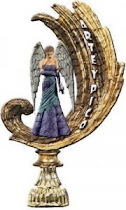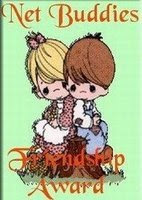Pneumonia is a general term that refers to an infection of the lungs, which can be caused by a variety of microorganisms, including viruses, bacteria, fungi, and parasites.
Often pneumonia begins after an upper respiratory tract infection (an infection of the nose and throat). When this happens, symptoms of pneumonia begin after 2 or 3 days of a cold or sore throat.
Signs and Symptoms
Symptoms of pneumonia vary, depending on the age of the child and the cause of the pneumonia. Common symptoms include:
- fever
- chills
- cough
- unusually rapid breathing
- breathing with grunting or wheezing sounds
- labored breathing that makes a child's rib muscles retract (when muscles under the rib cage or between ribs draw inward with each breath)
- vomiting
- chest pain
- abdominal pain
- decreased activity
- loss of appetite (in older kids) or poor feeding (in infants)
- in extreme cases, bluish or gray color of the lips and fingernails
Sometimes a child's only symptom is rapid breathing. Sometimes when the pneumonia is in the lower part of the lungs near the abdomen, there may be no breathing problems, but there may be fever and abdominal pain or vomiting.
When pneumonia is caused by bacteria, an infected child usually becomes sick relatively quickly and experiences the sudden onset of high fever and unusually rapid breathing. When pneumonia is caused by viruses, symptoms tend to appear more gradually and are often less severe than in bacterial pneumonia. Wheezing may be more common in viral pneumonia.
Some types of pneumonia cause symptoms that give important clues about which germ is causing the illness. For example, in older kids and adolescents, pneumonia due to Mycoplasma (also called walking pneumonia) is notorious for causing a sore throat and headache in addition to the usual symptoms of pneumonia.
In infants, pneumonia due to chlamydia may cause conjunctivitis (pinkeye) with only mild illness and no fever. When pneumonia is due to whooping cough (pertussis), the child may have long coughing spells, turn blue from lack of air, or make a classic "whoop" sound when trying to take a breath.
Description
Pneumonia is a lung infection that can be caused by different types of germs, including bacteria, viruses, fungi, and parasites. Although different types of pneumonia tend to affect children in different age groups, pneumonia is most commonly caused by viruses. Viruses that cause pneumonia include adenoviruses, rhinovirus, influenza virus (flu), respiratory syncytial virus (RSV), and parainfluenza virus (which causes croup).
Incubation
The incubation period for pneumonia varies, depending on the type of virus or bacteria causing the infection (for instance, respiratory syncytial virus, 4 to 6 days; influenza, 18 to 72 hours).
Duration
With treatment, most types of bacterial pneumonia can be cured within 1 to 2 weeks. Viral pneumonia may last longer. Mycoplasmal pneumonia may take 4 to 6 weeks to resolve completely.
Contagiousness
The viruses and bacteria that cause pneumonia are contagious and are usually found in fluid from the mouth or nose of an infected person. Illness can spread when an infected person coughs or sneezes on a person, by sharing drinking glasses and eating utensils, and when a person touches the used tissues or handkerchiefs of an infected person.
Prevention
Vaccines can prevent infections by viruses or bacteria that cause some types of pneumonia. Kids usually receive routine immunizations against Haemophilus influenzae and pertussis (whooping cough) beginning at 2 months of age. (The pertussis immunization is the "P" part of the routine DTaP injection.) Vaccines are now also given against the pneumococcus organism (PCV), a common cause of bacterial pneumonia.
Children with chronic illnesses, who are at special risk for other types of pneumonia, may receive additional vaccines or protective immune medication. The flu vaccine is strongly recommended for kids with chronic illnesses such as chronic heart or lung disorders or asthma, as well as otherwise healthy children ages 6 months through 19 years.
Because they're at higher risk for serious complications, infants who were born prematurely may be given treatments that temporarily protect against RSV, which can lead to pneumonia in younger children.
Doctors may give prophylactic (disease-preventing) antibiotics to prevent pneumonia in kids who have been exposed to someone with certain types of pneumonia, such as pertussis.
Antiviral medication is now available, too, and can be used to prevent some types of viral pneumonia or to make symptoms less severe.
In addition, regular tuberculosis screening is performed yearly in some high-risk areas because early detection will prevent active tuberculosis infection including pneumonia.
In general, pneumonia is not contagious, but the upper respiratory viruses that lead to it are, so it is best to keep your child away from anyone who has an upper respiratory tract infection. If someone in your home has a respiratory infection or throat infection, keep his or her drinking glass and eating utensils separate from those of other family members, and wash your hands frequently, especially if you are handling used tissues or dirty handkerchiefs.
When to Call the Doctor
Call your doctor immediately if your child has any of the signs and symptoms of pneumonia, but especially if your child:
- is having trouble breathing or is breathing abnormally fast
- has a bluish or gray color to the fingernails or lips
- has a fever of 102° Fahrenheit (38.9° Celsius), or above 100.4° Fahrenheit (38° Celsius) in infants under 6 months of age
Professional Treatment
Doctors usually make the diagnosis of pneumonia after a physical examination. The doctor may possibly use a chest X-ray, blood tests, and (sometimes) bacterial cultures of mucus produced by coughing when making a diagnosis.
In most cases, pneumonia can be treated with oral antibiotics given to your child at home. The type of antibiotic used depends on the type of pneumonia.
Children may be hospitalized for treatment if they have pneumonia caused by pertussis or other bacterial pneumonia that causes high fevers and respiratory distress. They may also be hospitalized if:
- supplemental oxygen is needed
- they have lung infections that may have spread into the bloodstream
- they have chronic illnesses that affect the immune system
- they are vomiting so much that they cannot take medicine by mouth
- if they have recurrent episodes of pneumonia
Home Treatment
If your doctor has prescribed antibiotics for bacterial pneumonia, give the medicine on schedule for as long as directed. This will help your child recover faster and will decrease the chance that infection will spread to other household members.
Don't force a child who's not feeling well to eat, but encourage drinking of fluids, especially if fever is present. Ask the doctor before you use a medicine to treat your child's cough because cough suppressants stop the lungs from clearing mucus, which may not be helpful in some types of pneumonia.
If your child has chest pain, try a heating pad or warm compress on the chest area. Take your child's temperature at least once each morning and each evening, and call the doctor if it goes above 102° Fahrenheit (38.9° Celsius) in an older infant or child, or above 100.4° Fahrenheit (38° Celsius) in an infant under 6 months of age.
Check your child's lips and fingernails to make sure that they are rosy and pink, not bluish or gray, which is a sign that the lungs are not getting enough oxygen.
Source: kidshealth.org
 Do you have heaps of financial papers in your house? Bills, receipts, credit card statements, tax records and investment files may have piled-up last year. Now is the best time to start arranging your records with these easy and useful organizing tips.
Do you have heaps of financial papers in your house? Bills, receipts, credit card statements, tax records and investment files may have piled-up last year. Now is the best time to start arranging your records with these easy and useful organizing tips. 




















